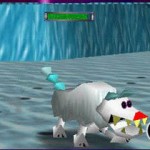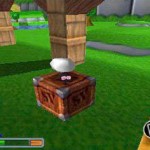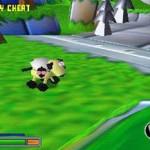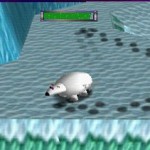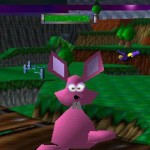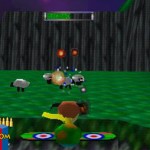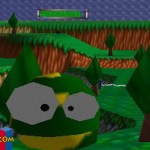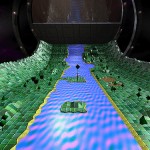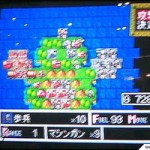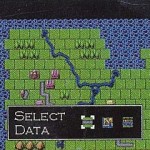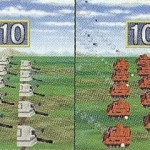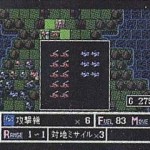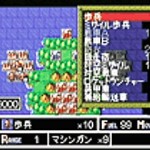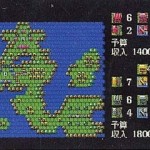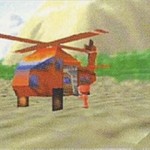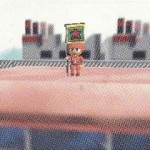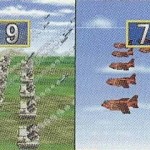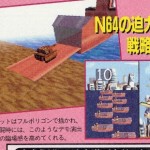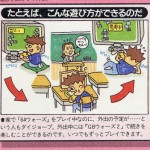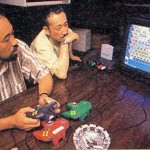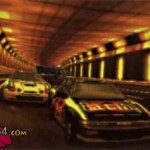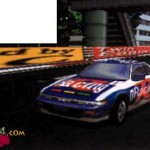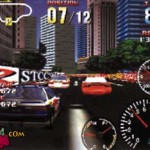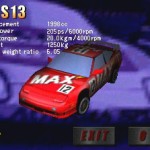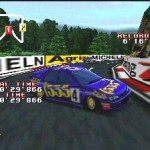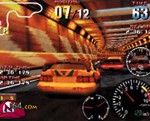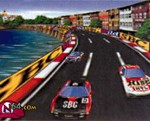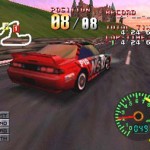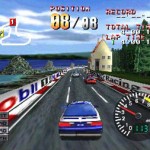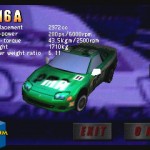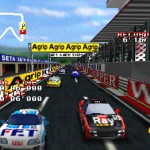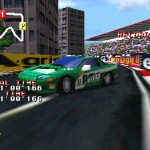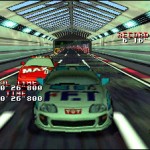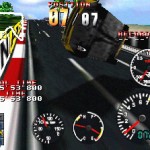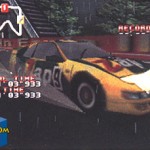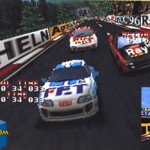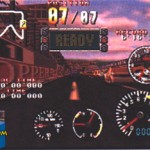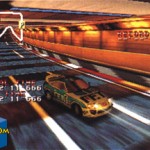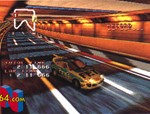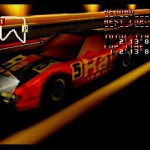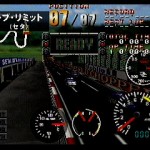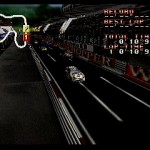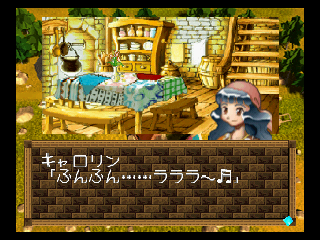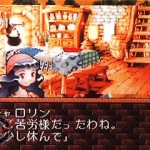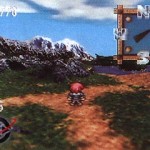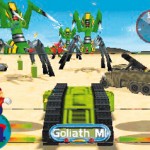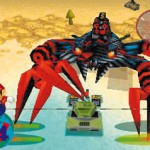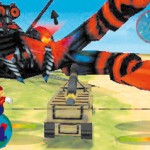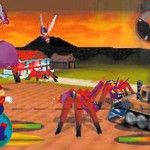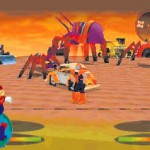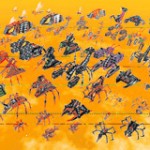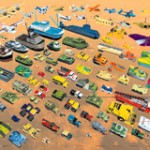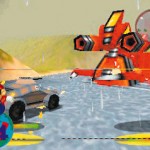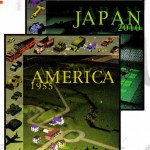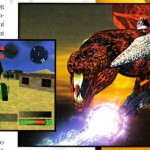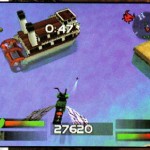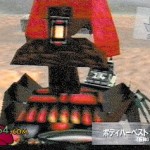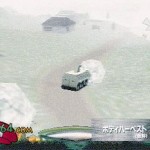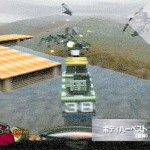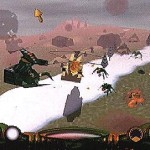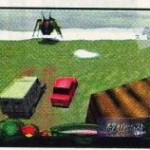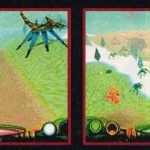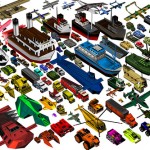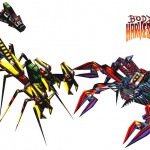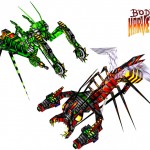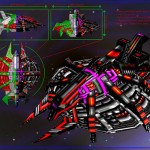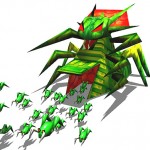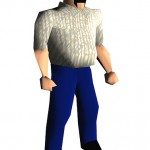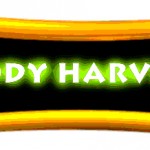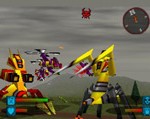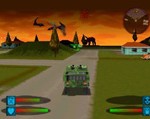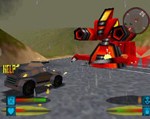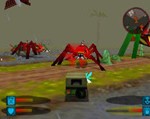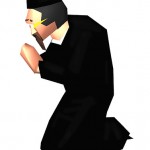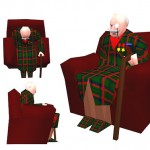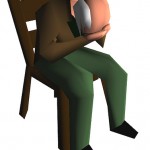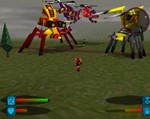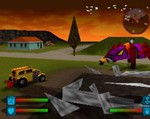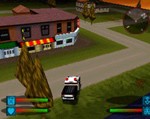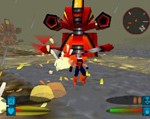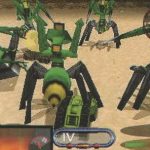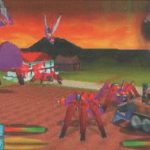![]()
In this video linked to us by Longuist, we can see an old music clip by Mouse on Mars, that uses scenes from what it looks like a beta version of the game. The major differences in this video should be:
- power gems & flowers look different
- no hud
- trees now have a texture?
- unknow level the video starts with?
- the “green” levels have now much more steel plates (remember: its a space station) (see level 7 for instance)
- and… no juggling disco bear ^^
Maybe some of these look different just because of the video montage, but its definitely earlier than the e3 1997 version.
Sven Bergmann, one of the producers of Mouse On Mars Twift video clip, has sent to us an email with some interesting informations about their collaboration with DMA: My friend MARKUS POPP (from “OVAL” music project) and I produced the promo in late summer 1997 in Berlin. Markus and JAN WERNER from “MOUSE ON MARS” are also working together as “MICROSOTRIA”. At some point in early summer 1997 Jan had been in Berlin and asked Markus and me if we would like to produce a video clip for MOUSE ON MARS’ new single “TWIFT”. Well, hell we would like to… and so we somehow agreed on a general plan but had only the idea of using video game footage. Jan liked that idea.
Later that summer Markus and I went to London to visit the ESTS 97 game show to shoot some video interviews with game designers and developers for a German/French TV art special on virtual designs. At that show we met the guys from DMA and interviewed their CEO/game designer/programmer Dave Jones. We also spoke to a very nice DMA PR gentleman, Brian Baglow and he granted us a first look at Silicon Valley, that wasn’t shown on the public floor but in a back room for VIPs only (haha, I guess everybody could sneak in there and glimpse at this game, since DMA took security kind of easy).
The great thing was that Markus managed to convince Brian to send us a beta cartridge to Berlin so that we could capture endless footage to use for the Mouse on Mars promo video (I still don’t know how he did it, truly amazing and very cool of Brian, too). The N64 beta cartridge was twice as large than the regular ones and the ROM and circuit board was sticking out of the gray plastic shell.
I couldn’t believe my eyes when the package first arrived in Berlin. Whoooo.
We then took my German N64 with a US converter game to a video production studio and capture a couple of hours of game footage on Beta SP tape and then imported it into an AVID editing system. I think it took us about three to four days for the whole clip including that half day game recording.
If I remember correctly there was no real shell design within the game but you could select two or three different stages directly. Just booting up the N64 and then go for the selection was the simple thing to do. And then there was the special button combo so you could change the animals moves (like the juggling bear) and also with another combination you could move the camera completely freely within the level.
We had lots of fun and very still amazed that DMA send us a beta cartridge.
After we finished the job, we sent the game back to DMA with a tape of that promo. I don’t know if Mouse on Mars and DMA did a deal so that DMA could use the music for promo and parties, but I assume so.”
Thanks a lot to Sven for these infos! :)
More beta Images:
Videos:

